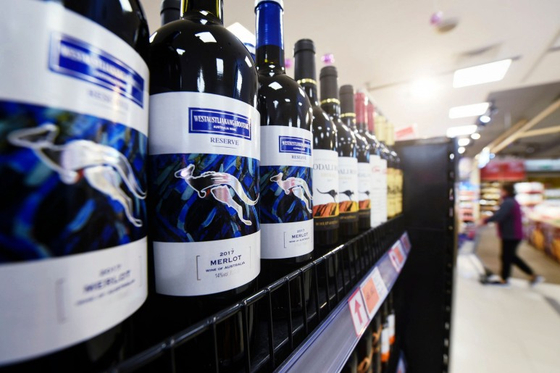Although the New Year is bright, there is a prospect that the conflict between China and Australia will continue. There are countries whose eyes have opened up through this gap. China has decided to impose tariffs of up to 200% on Australian wines. Australian wine prices have risen two to three times, significantly losing competitiveness in the market.
![Australian wine [AFP=연합뉴스]](https://i0.wp.com/pds.joins.com/news/component/htmlphoto_mmdata/202101/07/83bb855b-5a92-45c8-b887-b83e011ae288.jpg?w=560&ssl=1)
Australian wine [AFP=연합뉴스]
Then, not only’traditional powers’ such as France and Chile, but also’emerging countries’ such as Kazakhstan are trying to penetrate this gap and target the Chinese wine market, Hong Kong South China Morning Post (SCMP) recently reported.
Kazakhstan, a central Asian country, is representative.
‘Arba Winery’, one of the country’s famous wineries, is devoting great care to increase wine exports to China in recent years. “It is determined that the Chinese will find new wines to replace Australian wines” (SCMP).
![[사진 셔터스톡]](https://i0.wp.com/pds.joins.com/news/component/htmlphoto_mmdata/202101/07/1ec67fee-c963-4325-8e15-5e74f550bdf2.jpg?w=560&ssl=1)
[사진 셔터스톡]
Chinese importers, who have been looking for new wines to replace Australian wines since November of last year, are also active.
Kazakhstan is a country that not only has plenty of good land for growing grapes, but also has great advantages in that it is close to China. This is why China has long made this country a good partner with’food security’ in mind. Another advantage is that it is participating in the one-on-one project that the Chinese government is pushing for.
SCMP evaluates, “In particular, the high-quality organic wines of this country can satisfy the increasingly demanding tastes of the Chinese middle class.”
![Australian wine [AP=연합뉴스]](https://i0.wp.com/pds.joins.com/news/component/htmlphoto_mmdata/202101/07/d002774b-4b30-4ad6-beda-574c666b8ba1.jpg?w=560&ssl=1)
Australian wine [AP=연합뉴스]
If there is a problem, the situation is different from the Australian winemakers, which have grown with active support from the government. Investment in the overall infrastructure is required, but it is unclear whether the Kazakh government will be able to properly support it.
Chile, a’traditional powerhouse’, is also expected to be more active in the Chinese market.
This is because the relationship with China is not bad and has the ability to mass-produce wine of quite good quality. Wine producers in China are also not trying to miss this opportunity. However, it is evaluated that it is still insufficient to produce quality wine.
It’s not just wine. Many countries are also aiming for a place where Australian beef, which has also been subject to economic sanctions by China, has been pushed out. South American countries such as Argentina and Brazil are cited.
![[사진 셔터스톡]](https://i0.wp.com/pds.joins.com/news/component/htmlphoto_mmdata/202101/07/fdba566a-4fa7-43ec-a2aa-f5e8a59086e9.jpg?w=560&ssl=1)
[사진 셔터스톡]
China imported wines from Australia worth about 2.45 billion dollars (about 2.6 trillion won) in 2019 alone. China accounts for 37% of wines imported from abroad. It is the overwhelming first place, beating France (27%) and Chile (13%).
There is also a movement to’drinking Australian wine’ against China’s’Australian beating’, but on the contrary, competition among countries aiming for this opportunity is getting fiercer.
Reporter Lim Ju-ri [email protected]
